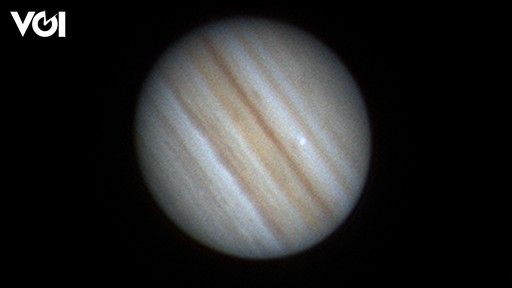JAKARTA – For the umpteenth time, Jupiter has been hit by an asteroid. It has only been more than a month since a similar incident was observed.
A team, led by Ko Arimatsu of Kyoto University, released footage of a mysterious bright light appearing on Jupiter for about four seconds on October 15.
The event is known to have occurred in Jupiter’s Northern Tropical Zone near the southern edge of the Northern Climate Belt. It is possible that the flash of light was caused by an asteroid hitting Jupiter. This incident comes more than a month after sky watchers in Brazil made similar observations.
“The flash felt like it was shining for a very long time to me,” said Twitter user @yotsuyubi21, who photographed the light with the Celestron C6 telescope. Live Science, Monday, October 25.
According to the Twitter account @yotsuyubi21, Jupiter displays two different lights, an ordinary glow and like infrared, showing Jupiter emitting an eerie pink glow. However, observers are not sure if the collision left any debris that scientists can monitor.
Jupiter is hit by dozens, perhaps hundreds, of asteroids every year, as the giant planet acts as a blockade to stop them from hitting Earth. Smaller objects, such as asteroids dotting the Solar System, can easily be pulled into the planet’s thick, turbulent atmosphere.
Some research suggests that objects at least 150 feet (45 meters) hit Jupiter every few months. However, capturing such an event is extremely rare.
The first recorded collision on Jupiter was Comet Shoemaker-Levy 9 (SL9) that hit in July 1994. Last month, amateur astronomers caught a bright flash of light appearing for a few seconds on the gas giant planet.
At the time, German astronomer Harald Paleske was observing the shadow of Jupiter’s moon, Io, creating a solar eclipse in Jupiter’s atmosphere when he saw a possible impact. After seeing the bright flash, Paleske said he looked at each frame in hopes of determining what caused the light.
Paleske found the flash was in Jupiter’s atmosphere and remained visible for two seconds, ruling out any disturbance on Earth or random satellites floating around the planet.
– .


